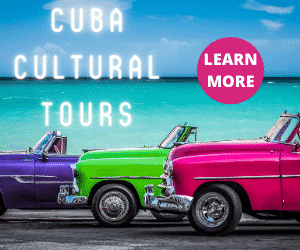There are nine Cuban UNESCO World Heritage sites in this beautiful island. This is despite Cuba being a relatively small country with 42,000 square miles.
To put that into perspective, that’s nearly 40% of what the United States offers, despite the U.S. being over 90 times larger.
According to UNESCO, these sites hold “outstanding universal value” that transcends borders and impacts humanity. To be on the list, a location should meet the following requirements:
1. Have special importance for everyone.
2. Represent unique, or the best or most significant, examples of the world’s cultural and/or natural heritage.
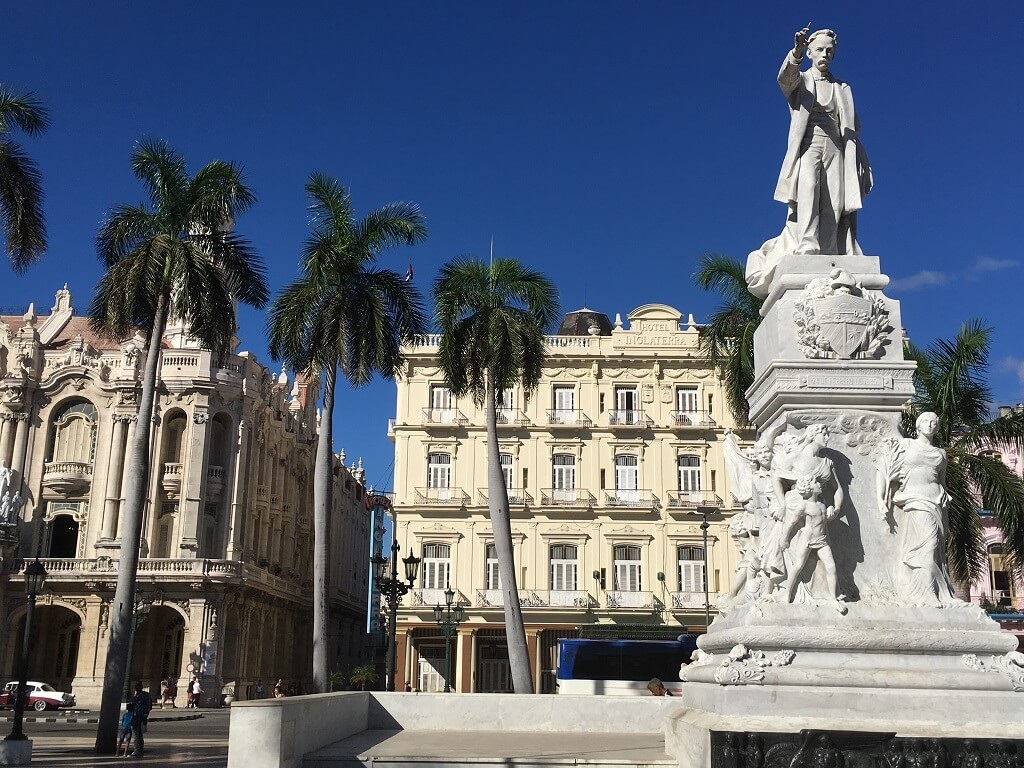
Each of the Cuban UNESCO World Heritage sites is celebrated for its remarkable historical, architectural, and natural significance. Cuba punches way above its weight in all those categories.
Cuba joined UNESCO in 1947. The first site to be added to the organization was Old Havana in 1982. Eight sites were subsequently added.
All these sites can be reached from Havana or any major city via the Viazul bus service or private car that can be arranged through your “casa particular” (guesthouse) hostess. “Colectivo” taxis, or shared taxis can be accessed at local Viazul bus stations or just as you casa hostess.
There are currently 14 sites on the tentative list.
Old Havana and Its Fortification System
Old Havana, was founded by the Spanish in November 1519 along the shores of the Bay of Havana. It is Cuba’s oldest UNESCO World Heritage Site.
The best way to experience Old Havana is on foot with an Old Havana self-guided walking tour. Another option is to book a walking tour with reliable and knowledgeable guides.
Spanning about one and a half square miles, this historic area features winding streets, parks, and a mix of beautifully ornate, albeit sometimes weathered, architecture from colonial times to the present.
The area is within the boundaries of Havana itself, Cuba’s capital city. To see Havana in a classic car from the 1950s in the quintessential Havana experience.
Dr. Eusebio Leal, the late historian and director of Old Havana’s restoration, devoted his life to reviving the city’s grandeur. Among its notable attractions are four main squares:
Plaza de Armas: The original location of Havana’s founding, Plaza de Armas is an exquisite plaza with a verdant park encircled by some of the best museums in Havana.
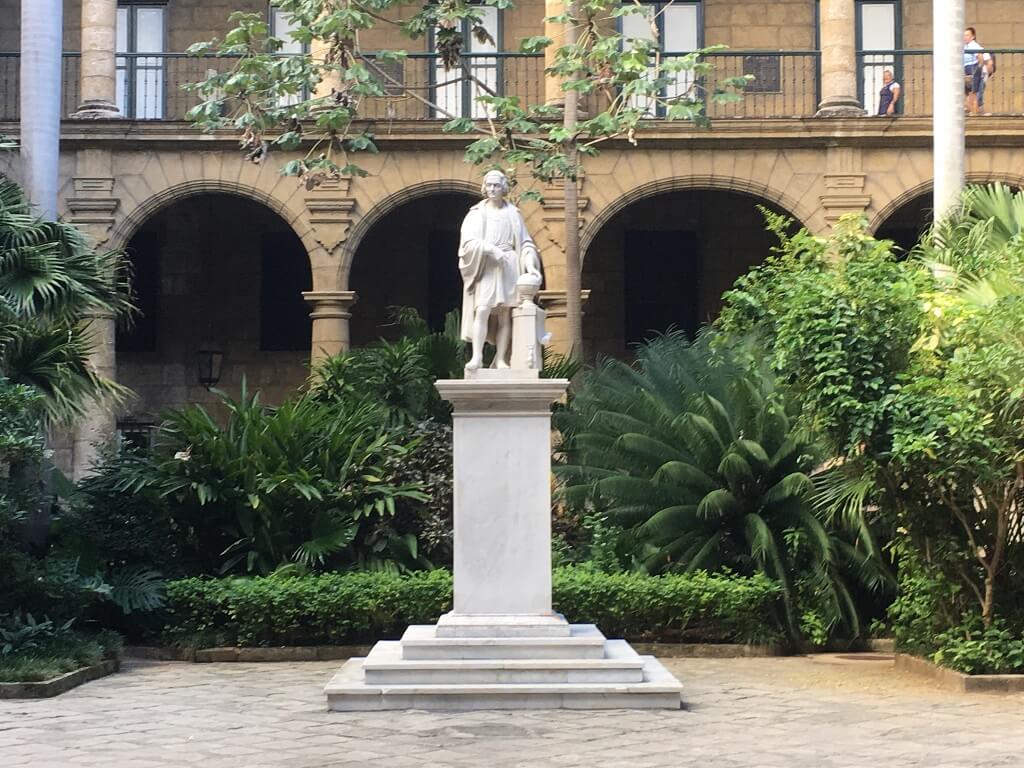
Surrounding the square are the Museum of the City of Havana, the Templete, site of Havana’s founding, the Museum of Natural History and the Castillo de La Real Fuerza, the oldest fort in the Americas.
In the center of the plaza is a lovely park with a fountain and a statue of Carlos Manuel de Cespedes, a Cuban hero of the Revolutionary War against Spain.
Plaza Vieja: Previously a slave market, this square has been renovated and is now a bustling area with art galleries, breweries, restaurants and cafes. Throughout the plaza, you will see many unique artworks.
Plaza de San Francisco: This square, well-known for its beauty and centrally located marble fountain, provides a lovely setting for neighborhood festivities.
Plaza de La Catedral: This area is flanked by quaint colonial arches in front of what were once the homes and offices of the local Spanish colonial government.
Old Havana is my favorite of the Cuban UNESCO World Heritage sites
In the center sits the brooding 18th-century Baroque cathedral, hence the name of the plaza.
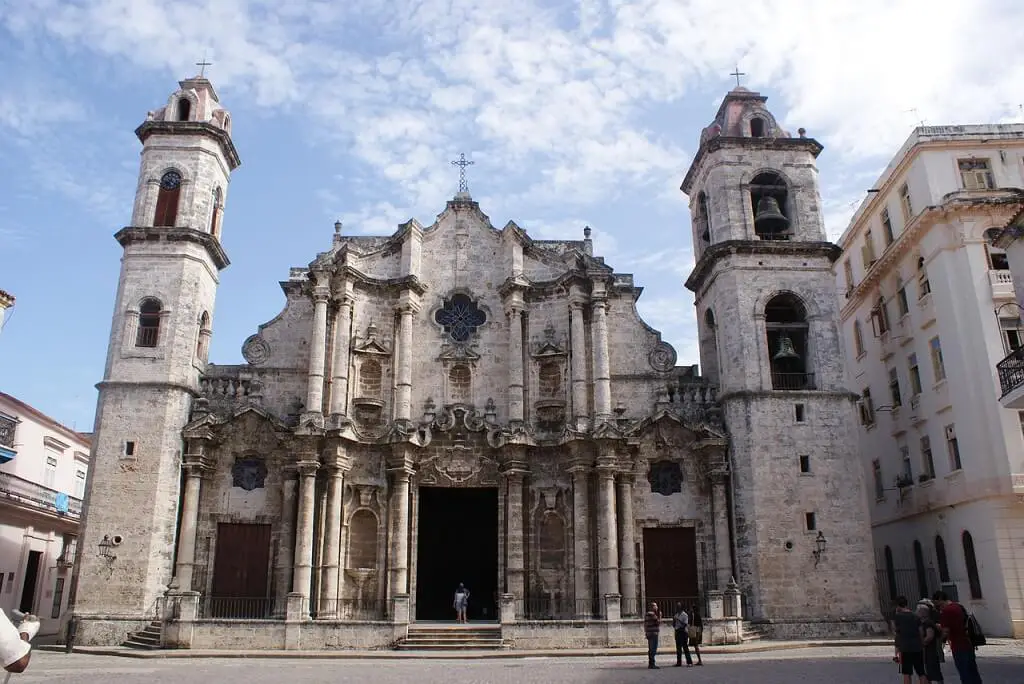
Havana needed a great deal of protection because it was a crucial jewel in the Spanish Empire. The many fortifications form part of the city’s UNESCO designation.
The remnants of the city’s original walls still stand alongside an impressive network of defensive installations, including some of the oldest fortresses in the Americas: Castillo de la Real Fuerza, Castillo de San Salvador de la Punta, and Castillo de los Tres Reyes del Morro.
The best places to stay in Havana are in Old Havana (Habana Vieja). This is close to all the attractions that Culturally fascinating Havana has to offer.
Trinidad and the Valle de los Ingenios
Inscribed in 1988, the colonial town of Trinidad is just about 3-1/2 to 4 hours east of Havana, and just an hour away from Cienfuegos.
Trinidad is considered one of the best-preserved colonial towns in The Americas.
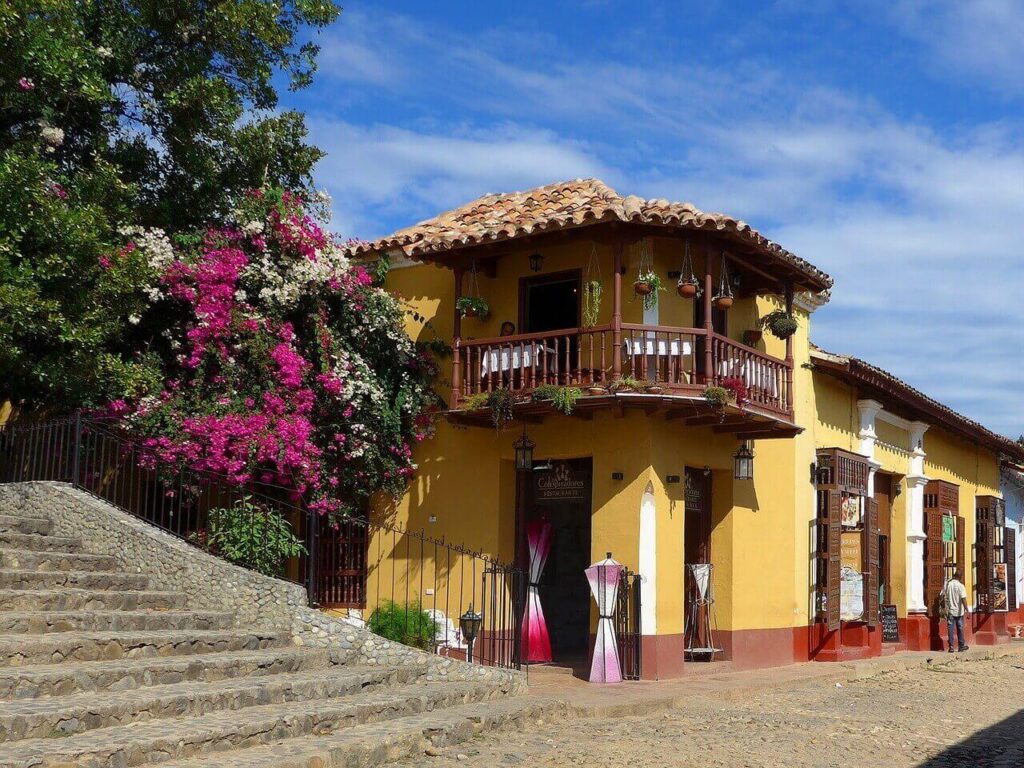
It features charming cobblestone streets, red-shingle-roof buildings, and beautiful plazas surrounded by lush greenery and tall palm trees.
At the heart of the town is the charming Plaza Mayor, designed in a neo-baroque architectural style.
Surrounding the plaza are informative museums, such as Museo Romántico and Museo de Arquitectura, which showcase the area’s rich sugar-producing history.
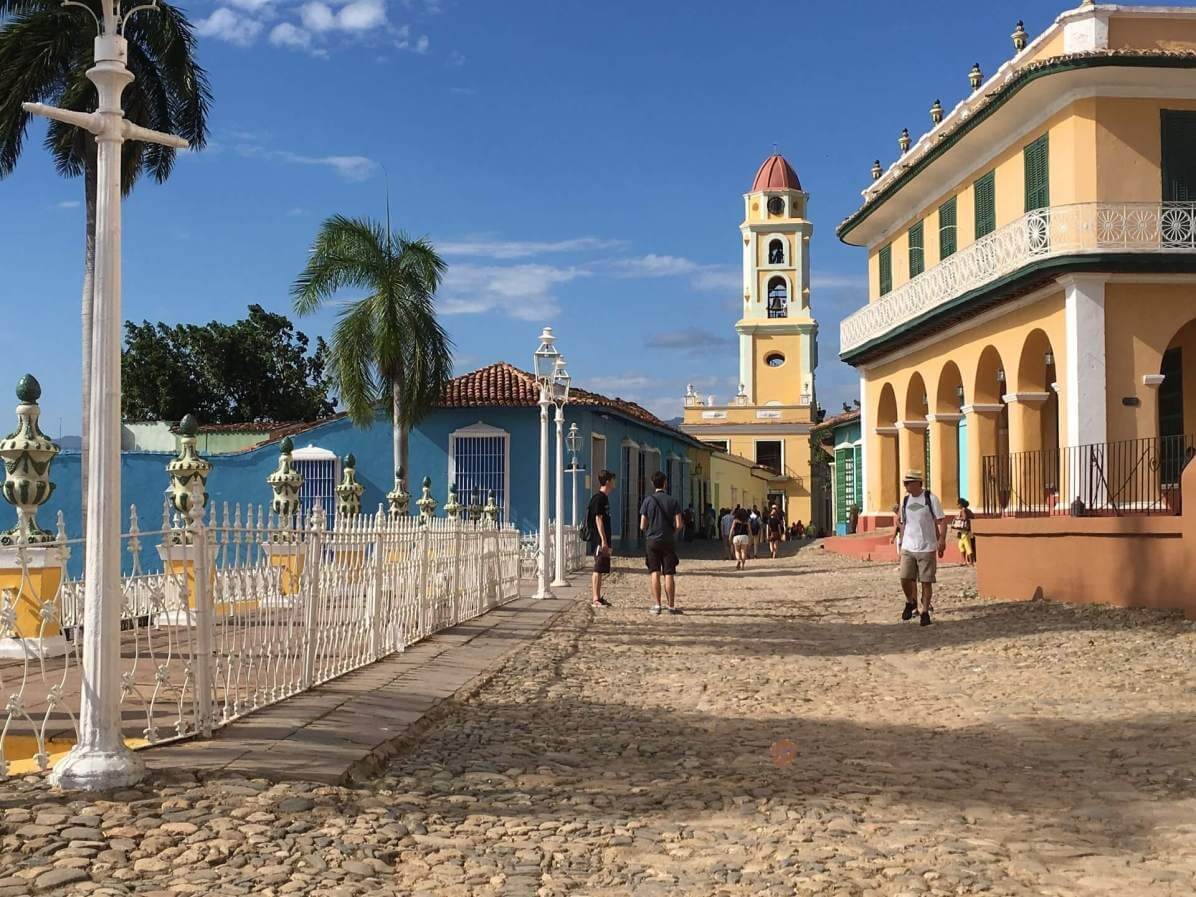
Nearby, the 19th-century Iglesia de la Santísima church offers panoramic views of the town from its steeple.
Also included in the Trinidad UNESCO complex is the Valle de los Ingenios (Valley of the Sugar Mills), located about 12 kilometers away.
This area is dotted with three significant sugar mills: San Luis, Santa Rosa, and Meyer. In the 18th and 19th centuries, these mills were central to Cuba’s sugar production.
The dilapidated buildings and abandoned mills that formerly supported the country’s economy are open for tourism today.
After a decline in sugar production, Trinidad became a popular travel destination with a thriving nightlife culture that includes restaurants, outdoor music venues and even a nightclub in a cave.
The town has a rich history, colorful art, and stunning natural beauty including beaches, tropical forests and waterfalls making it one of the most interesting of the Cuban UNESCO World Heritage sites.
My guide to Trinidad features museums, nightlife, nature and beach activities.
The city’s colonial center is the best place to stay in Trinidad. Especially near the Plaza Mayor
San Pedro de la Roca Castle, Santiago de Cuba
Located in Santiago de Cuba’s Bay, San Pedro de la Roca Fortress, also called El Morro de Santiago, was inscribed in 1997.
Constructed in 1638 to ward against pirates and intruders, it functioned as a tactical barrier against many would-be invaders in the 1700s and 1800s. The British were especially interested in Cuba and was at that time fighting with Spain for possession of the rich colony.
Inside the fortress is a small museum with an exhibit that tells the history of the pirates that navigated these Caribbean waters. Real-life Pirates of the Caribbean.
The fortification is known for its geometrical shape and symmetry and was designed by Italian Giovanni Bautista Antonelli, a military engineer in the employ of the Habsburg monarchs of Austria and Spain.
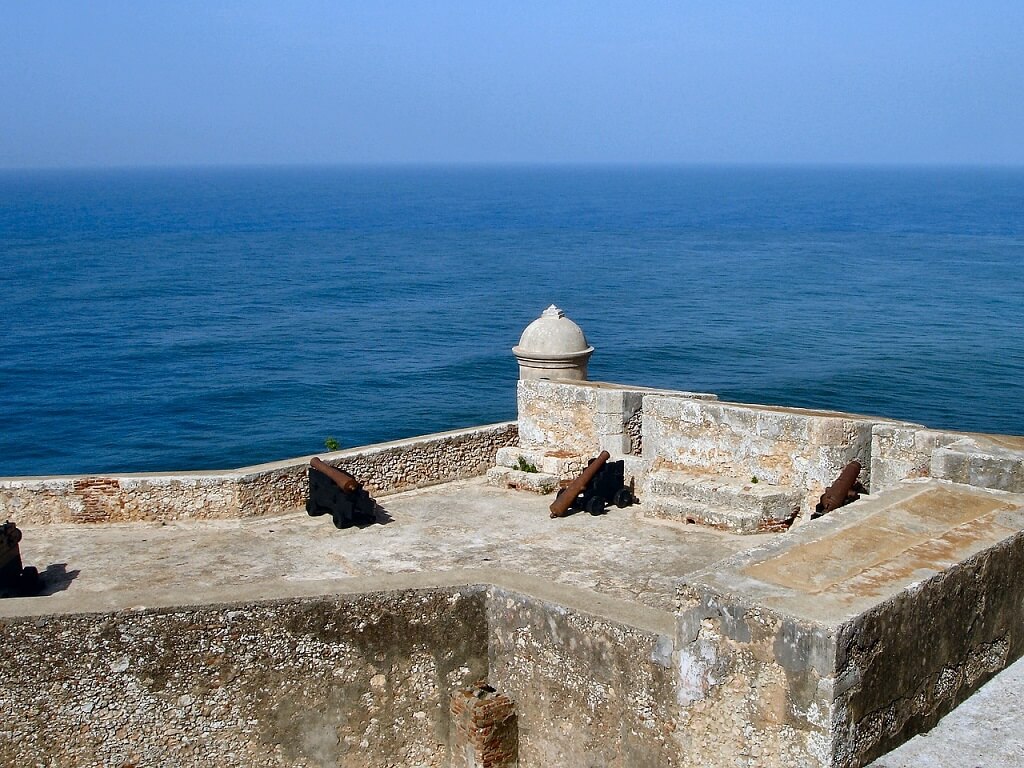
The fortress was constructed in the Spanish-American military architectural style and is considered to be the finest example of that style in the Americas.
The fortress is also famous for its complex network of staircases that wind up the side of the rocky coast, a unique engineering feat.
See my guide to Santiago de Cuba and its amazing fortress, the San Pedro de La Roca
There area many excellent places to stay in Santiago. The magnificent Fortress of San Pedro de la Roca is not far from the center of town.
Desembarco del Granma National Park
Inscribed in 1999, Desembarco del Granma National Park is located at Cuba’s southwestern tip and is recognized as one of Cuba’s natural UNESCO World Heritage Sites.
The park’s name translates to “Landing of the Granma,” honoring the yacht that Fidel and Raul Castro, along with Che Guevara and other revolutionaries, used to reach Cuba in 1956, marking the beginning of the Cuban Revolution.
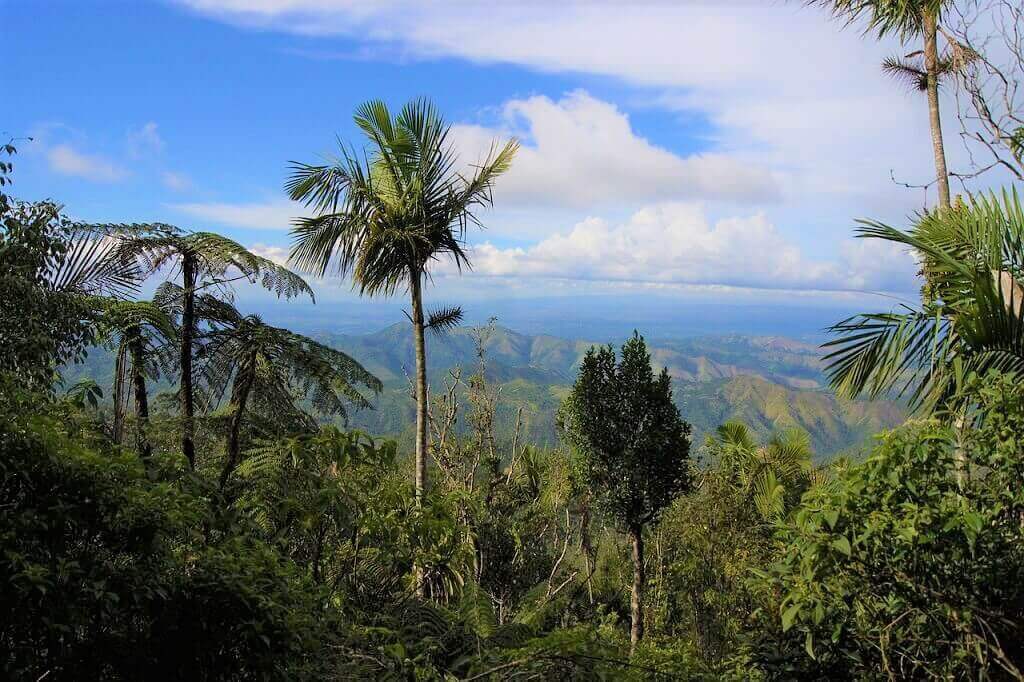
Visitors to the park can experience its incredible biodiversity, featuring a rich array of tropical flora and fauna. The Toa River, Cuba’s largest, flows through the park, nourishing its unique ecosystems.
This park has almost 500 different species of plants, 12 of which can only be found in the park itself.
You’ll find the world’s largest and best-preserved coastal limestone terrace system here. There are giant sinkholes, caves, canyons, and pristine cliffs here.
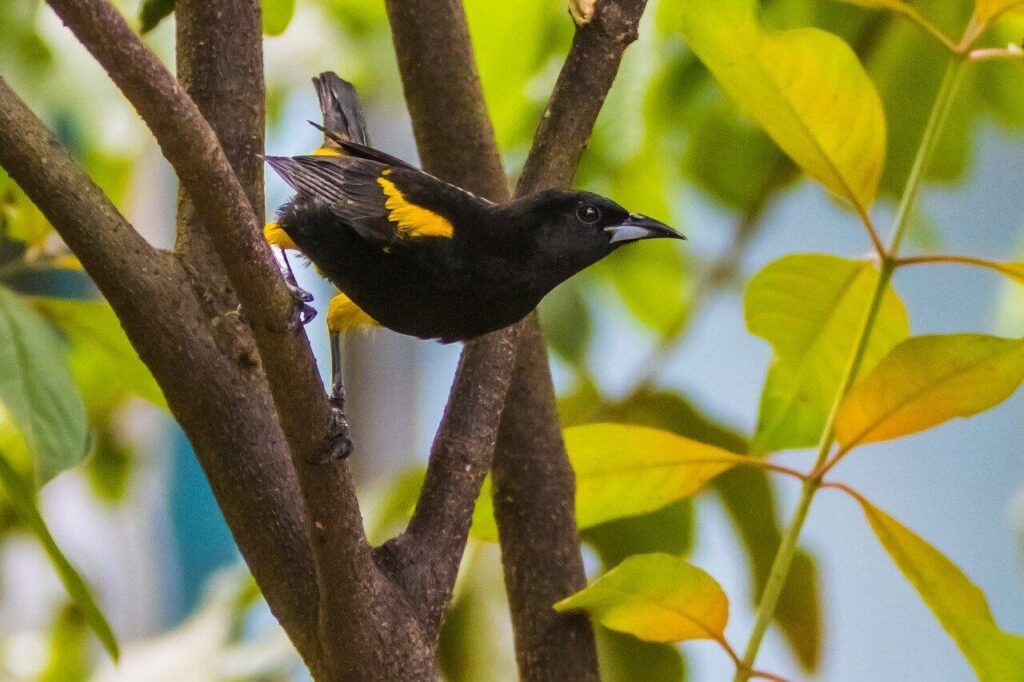
The park is home to 110 birds, 13 mammals, 44 reptiles and 7 amphibians. Ninety percent of these amphibians and reptiles are not found anywhere else on Earth. It’s like visiting another planet.
Valley of Viñales
Another treasure is the stunning Valley of Viñales This is the UNESCO site you’ll discover on the far western side of the island.
Located around 3.5 hours west of Havana, the Valley of Viñales is a breathtaking site inscribed in 1999.
When people sing the praises of Cuban cigars, this area is where the tobacco came from. It is renowned for producing some of the best tobacco in the world.
This lush and jaw-droppingly beautiful valley is a tourist draw for a multitude of reasons. Experience the food from organic farms, the natural beauty of peaceful rivers, and verdant forests while hiking the many scenic routes.
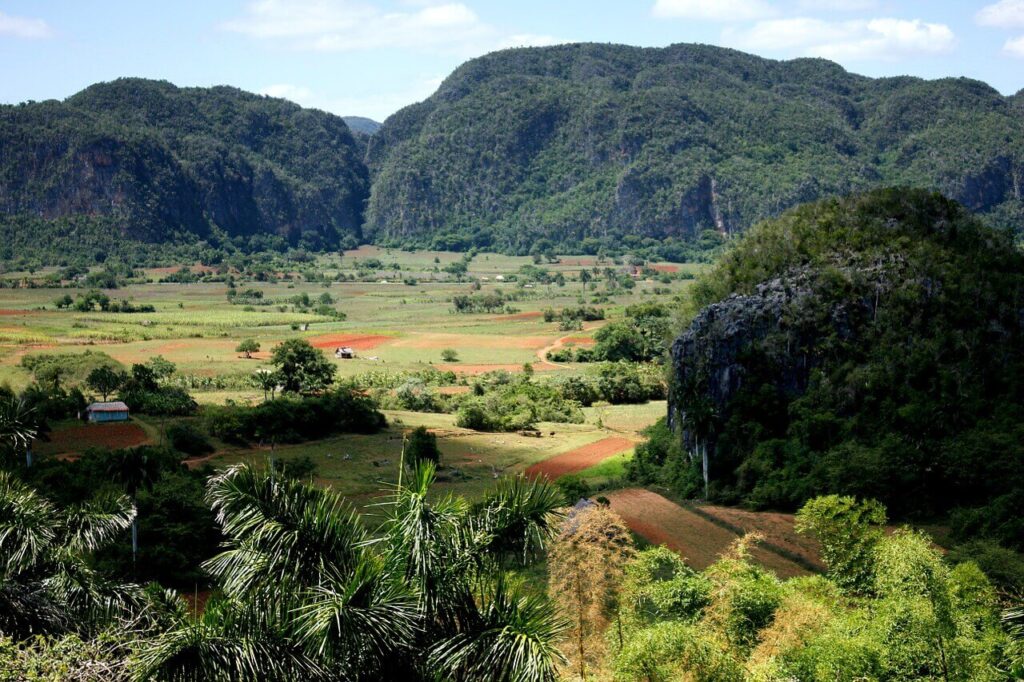
Learn about about traditional tobacco and sugar production production on large plantations.
My favorite activity in Viñales is sailing on underground rivers that wander through a labyrinth of massive caves—a testament to the region’s distinctive and unique limestone topography. This is a very unusual but equally spectacular journey.
The valley’s unique geological features include impressive limestone formations called mogotes, which rise impressively from the verdant landscape.
The adjacent village of Viñales is an ideal location to relax after a full day of exploration. With its lively atmosphere, visitors can enjoy a range of restaurants, bars, and live music venues along Cisneros Street, the town’s main thoroughfare.
Yet, despite its vibrant local culture, the true draw of Viñales remains its breathtaking natural beauty.
I can honestly say this is the most beautiful place I’ve ever seen. This is a must-visit among the Cuban UNESCO World Heritage Sites. My guide to Viñales will show you where to go and the best things to do.
To be close to the breathtakingly beautiful Valley of Viñales, stay in the town of Viñales. Everything is relatively close by.
Archeological Landscape of the First Coffee Plantations in the Southeast of Cuba
The First Coffee Plantations in Southeast Cuba, which were inscribed in 2000, is an archeological museum honoring the life of Africans who were held as enslaved people in the 1800s.
After the Haitian Revolution, French plantation owners moved their coffee farms from Haiti to southeast Cuba. There were more than 170 coffee plantations, or cafetales, in the region at one point dating from the 19th and 20th centuries. They were spread out over 7 locations

Alejandro von Humboldt National Park
Inscribed in 2001, Alejandro von Humboldt National Park, a paradise of biodiversity, is another of Cuba’s nature-related UNESCO World Heritage Sites.
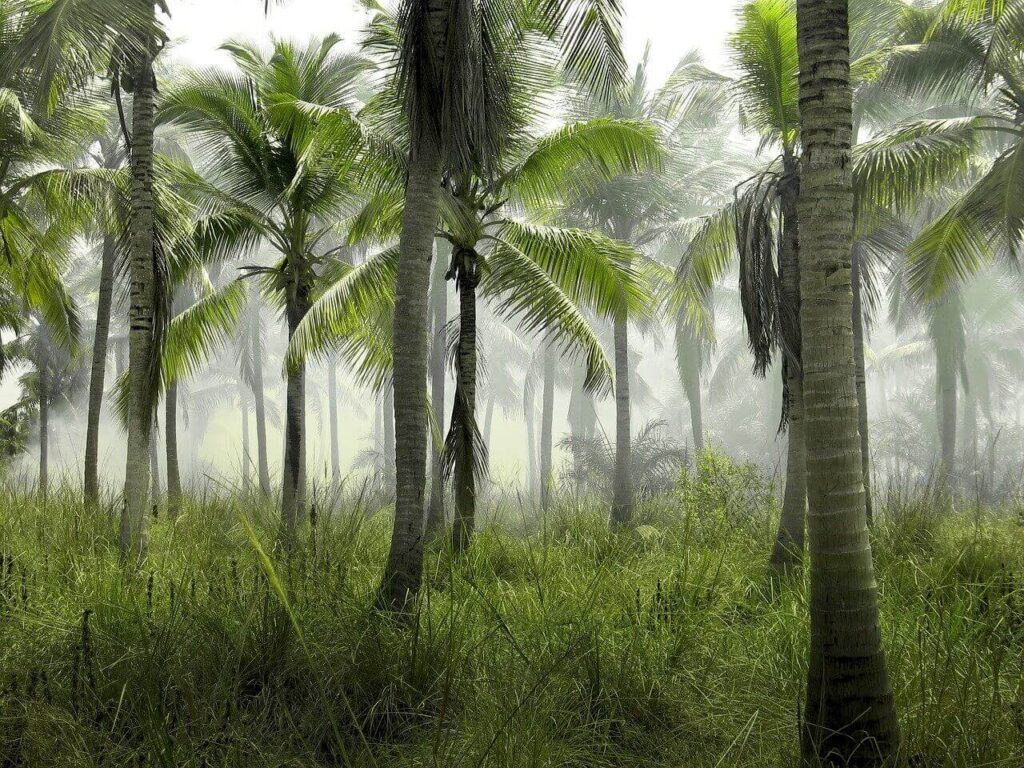
The park was named after a German scientist who explored the area in the early 1800s and was so impressed by the area that he felt compelled to document its natural treasures.
The park spans over 70,000 hectares across Holguín and Guantánamo provinces. It is famous for having the highest plant density in Cuba and is known as one of the world’s most biologically diverse tropical ecosystems.
The park is home to much of Cuba’s unique wildlife, including 16 endemic plant species, various reptiles and amphibians, and the endangered Cuban solenodon—a nocturnal, venomous creature.
Another notable resident is the heartbreakingly beautiful painted snail (Polymita Picta), whose colorful shells have made it a target for collectors, leading to its endangered status.
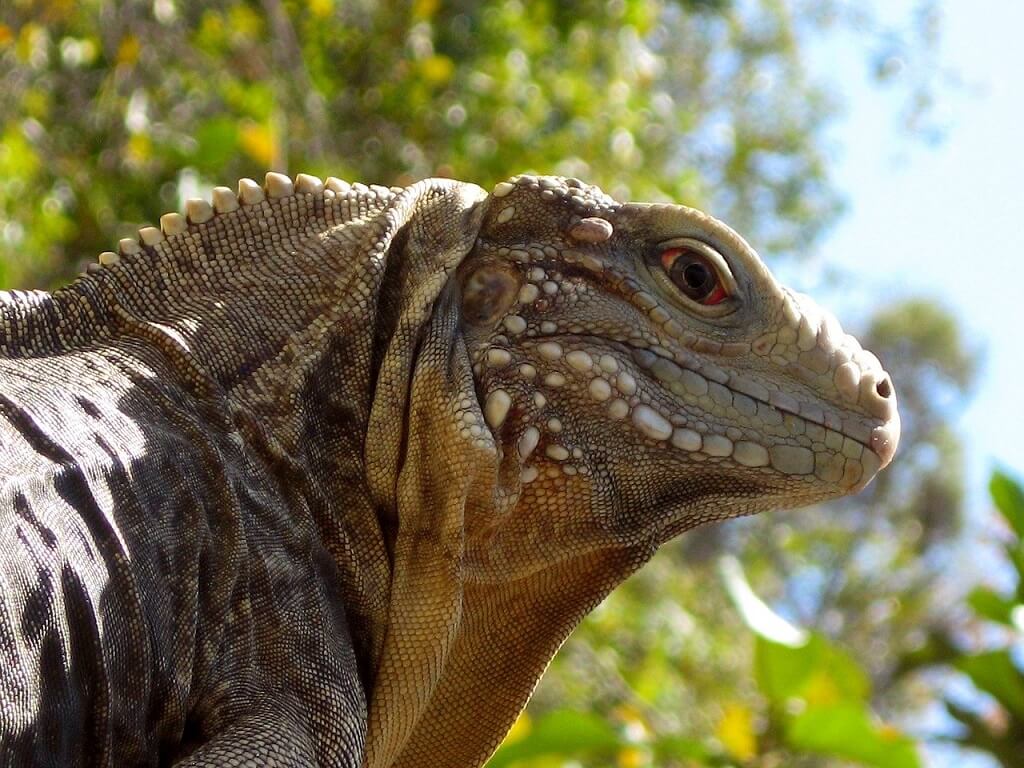
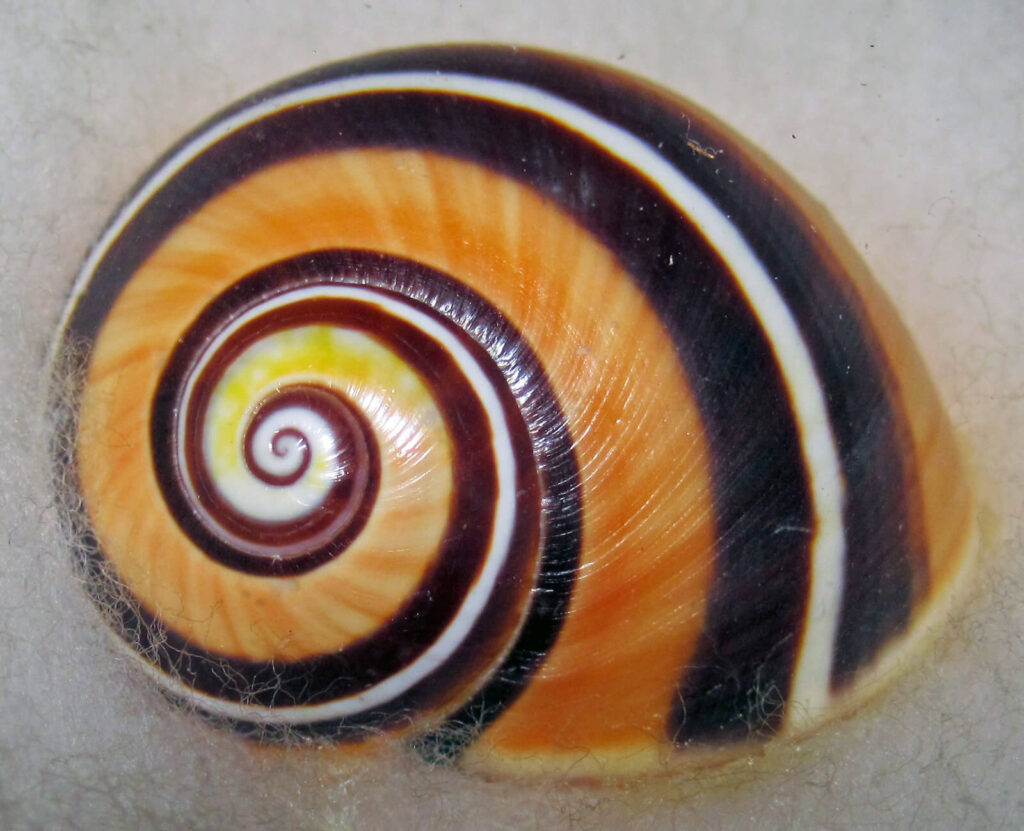
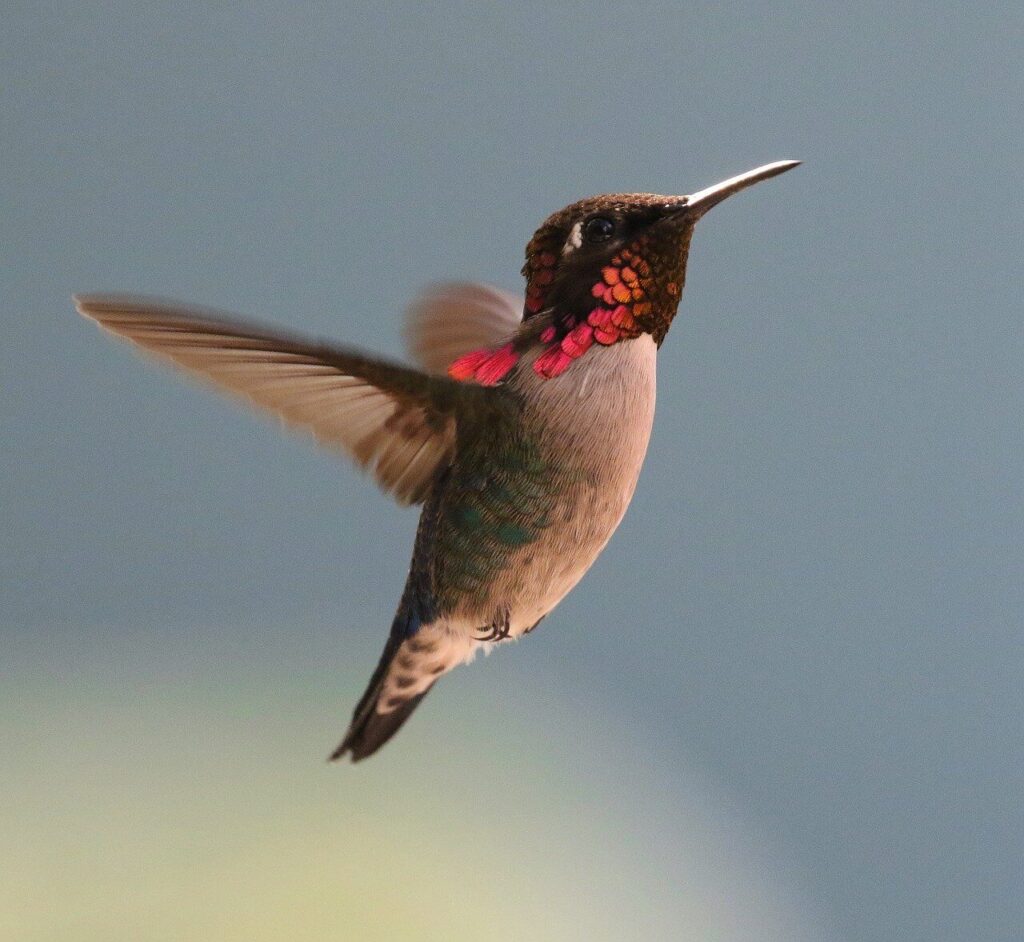
The Polymita Picta is so lovely that it was declared Mollusc of the Year 2022 by the scientific community.
Urban Historic Center of Cienfuegos
The Historic Center of Cienfuegos is often regarded as the most beautiful plaza in Cuba and is recognized as a UNESCO World Heritage Site. It was inscribed in 2005.
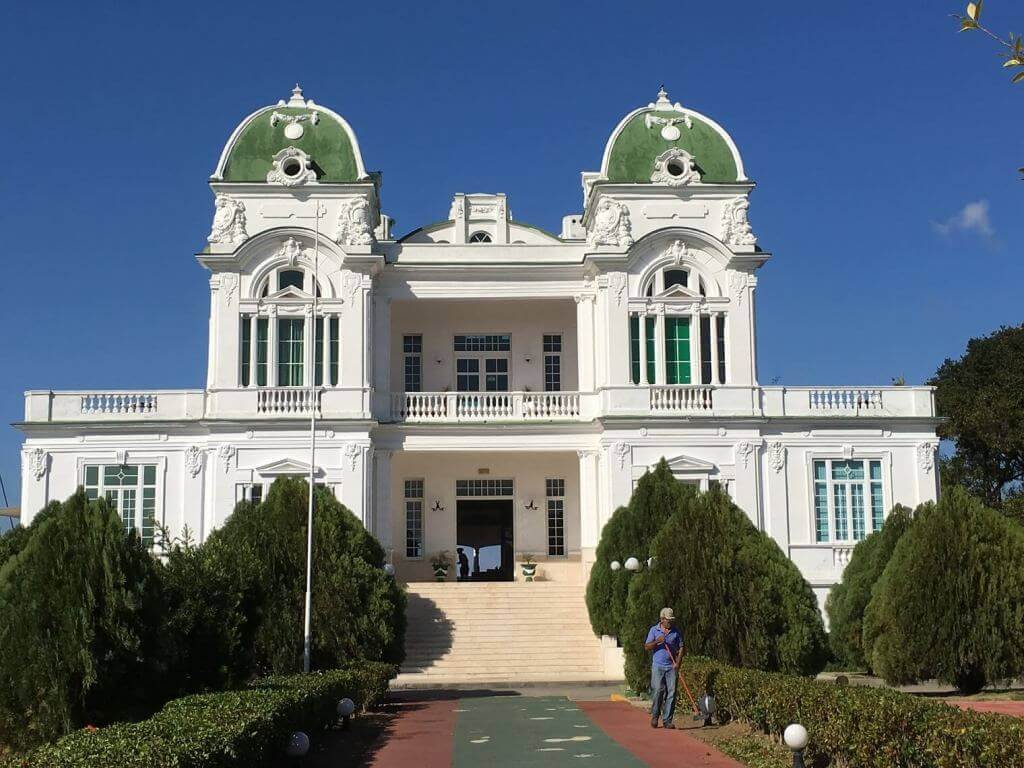
Founded in 1819, Cienfuegos is unique as it was settled by French immigrants from Bordeaux and Louisiana. This is reflected in the city’s French-inspired street names and cemetery inscriptions. Many of the names in the city’s lovely little La Reina Cemetery are of French origin.
The urban center is charming and features stunning neoclassical architecture, including the Arch of Triumph, Our Lady of the Immaculate Conception Cathedral, José Martí Park, and the ornate Tomás Terry Theatre.
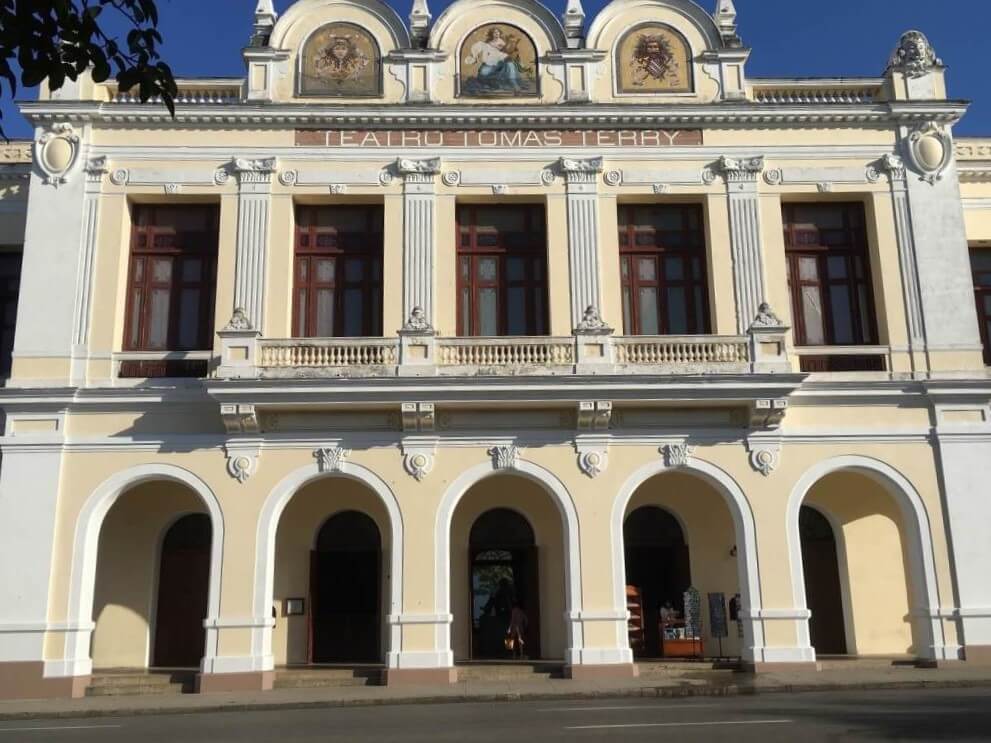
Beyond the city center, visitors can explore Fort Jagua, built in 1742 to ward off pirates, and the Palacio del Valle, a historic villa from 1913-1917 created in a Moorish style. It is now a hotel and restaurant with scenic views of bucolic Cienfuegos Bay.
La Reina Cemetery, located outside the city, stands out for its impressive funerary sculpture and artistry. Offering tours, the caretaker shares interesting anecdotes about the well-known families buried there.
Cienfuegos is unique in Cuban cities. See why in my guide to Cienfuegos and its surrounding areas.
Historic Centre of Camagüey
Camagüey, the provincial capital and third-largest city in Cuba was inscribed in 2008. Established in 1528, it developed into a hub for sugar crops and cattle breeding.
After being burned down by privateer Henry Morgan in the 17th century, the city was rebuilt with a clever design to confuse invaders. Today, its historic center, characterized by winding streets and squares, is a UNESCO World Heritage Site.
Camagüey is renowned for its remarkable array of Art Nouveau, colonial, neoclassical, and Art Deco buildings. Its ancient town serves as the hub of the local social and cultural scene.
These nine sites have captivated visitors for centuries, showcasing Cuba’s unique heritage and historical significance. From the vibrant streets of Old Havana to the lush landscapes of Valle de Viñales, each location tells a story of resilience and artistry.
As these sites continue to inspire awe, they remain vital to understanding Cuba’s vibrant legacy for generations to come.
Lesser-Known Cuban UNESCO Tentative Sites
Escuelas Nacionales de Arte de Cubanacán – The National Art Schools of Cubanacán are iconic symbols of post-revolutionary architecture, blending modernist design with Cuba’s artistic spirit, built in the 1960s.
Tropicana – One of Cuba’s most famous cabarets, Tropicana is renowned for its vibrant nightlife, extravagant performances, and open-air stage nestled in tropical gardens. Tropicana is just one of the many Havana nightclubs.

El Vedado, ciudad jardín temprana – El Vedado, known as Havana’s “early garden city,” is a lush, residential neighborhood that combines modernist architecture with abundant greenery.
Central Campus of the University of Havana – This historic campus, founded in 1728, is one of Latin America’s oldest universities, rich in academic history and architectural significance.
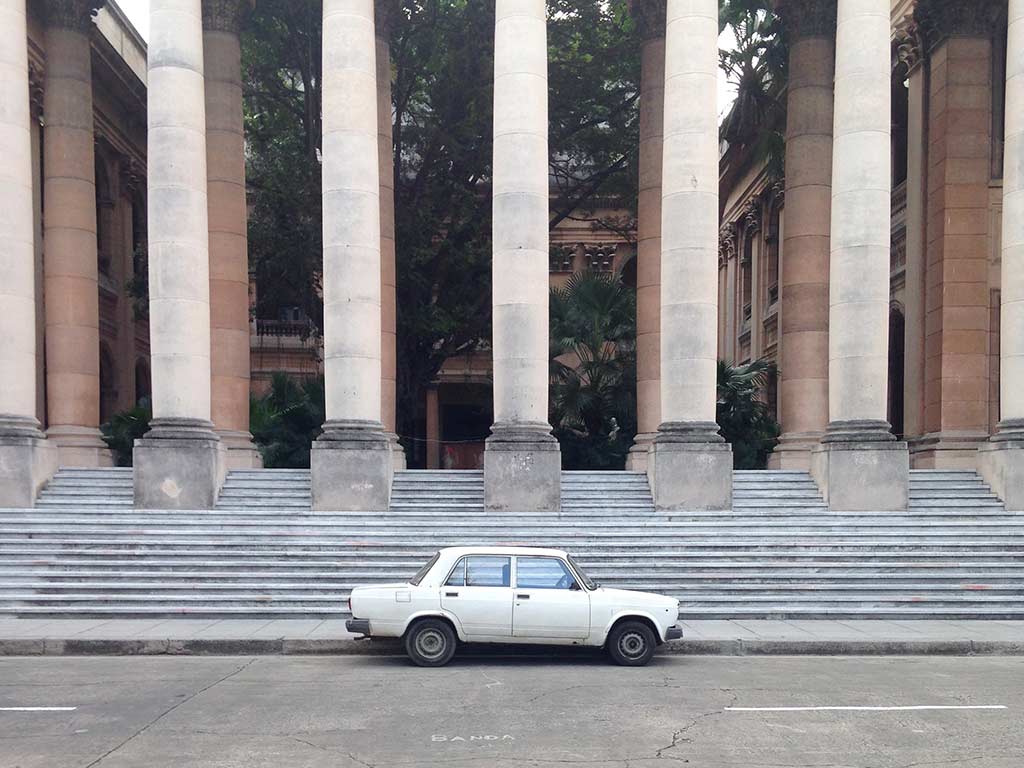
Triolet French Drugstore (Pharmacy Museum) – Located in Matanzas, this 19th-century French drugstore now serves as a pharmacy museum, preserving its antique medical tools and traditions.
Santiago de Cuba, sus escenarios históricos – Santiago de Cuba holds historical significance with sites like the Moncada Barracks and Revolution Square, embodying Cuba’s revolutionary legacy.
Sites of Memory of Slavery in Cuba – These sites pay homage to the history of slavery in Cuba, preserving plantations and locations where enslaved Africans worked and lived.
Parque Nacional Caguanes – Located in northern Cuba, this national park is known for its diverse wildlife, caves, and stunning coastal ecosystems.
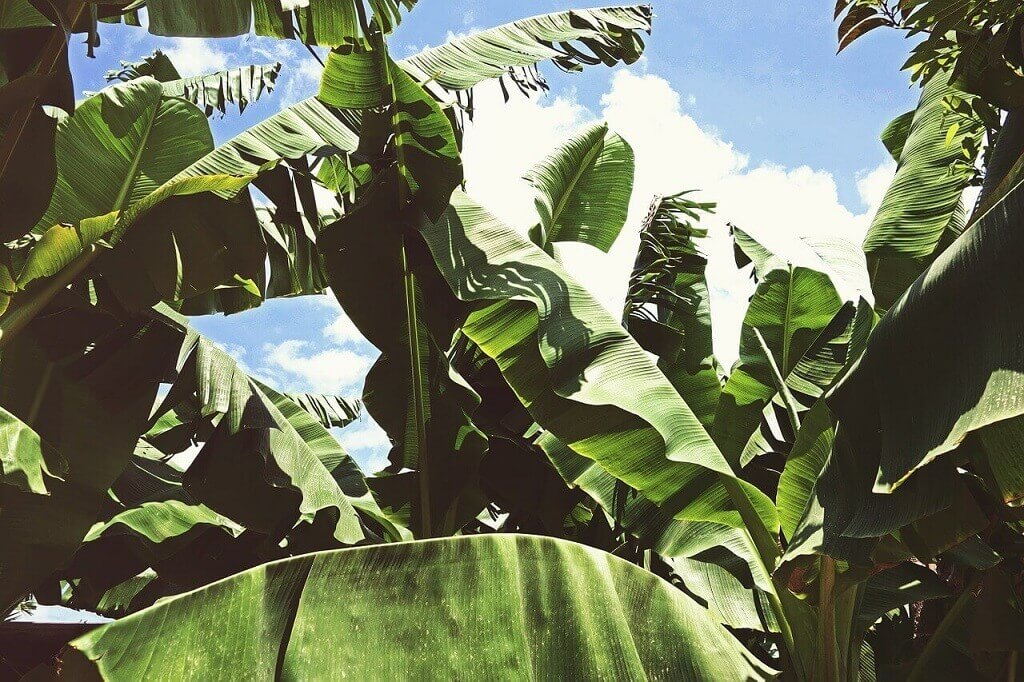
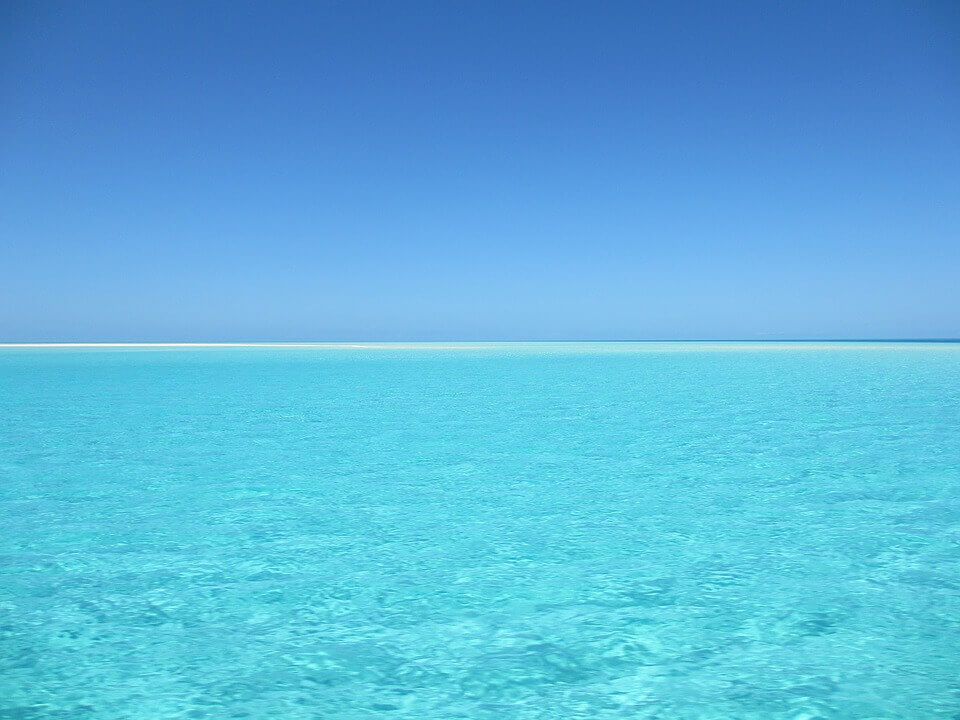
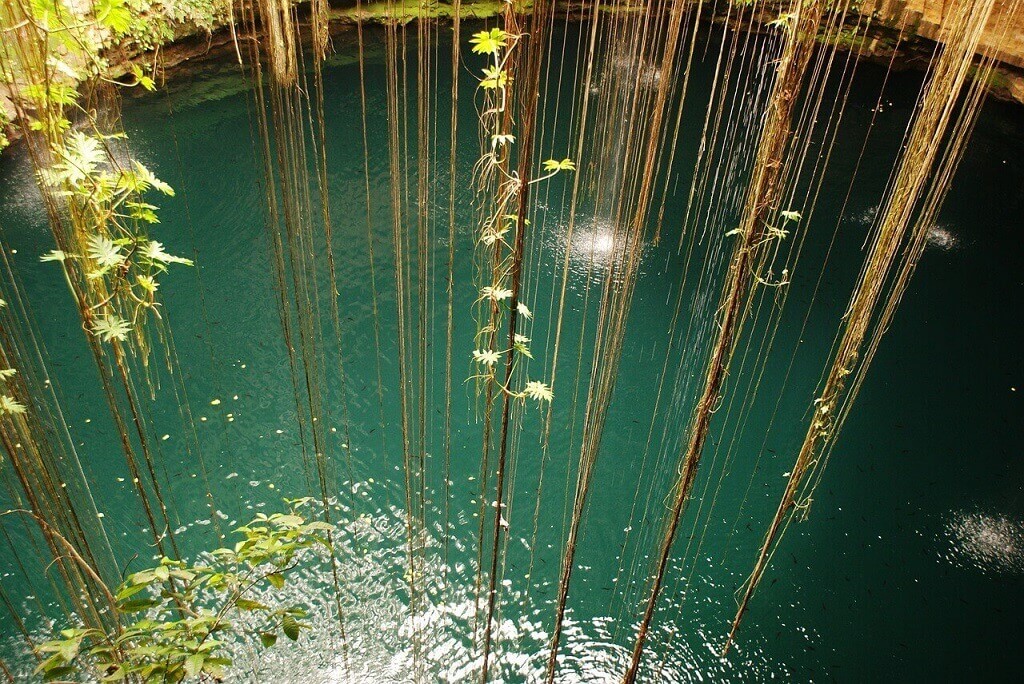
The National Park Ciénaga de Zapata and the Speleological-Lacustrine System – Cuba’s largest wetland, the park is home to unique fauna, birdwatching opportunities, and the country’s most extensive cave system.
The Aqueduct of Albear – Built in the 19th century, this aqueduct is an engineering marvel that continues to supply fresh water to Havana today.
National Schools of Art, Cubanacán – Known for their innovative design, these schools represent a fusion of Cuban culture and modernist architectural elements.
Ciénaga de Zapata National Park – This wetland ecosystem is a paradise for birdwatchers, home to the Cuban crocodile and hundreds of species of migratory birds.
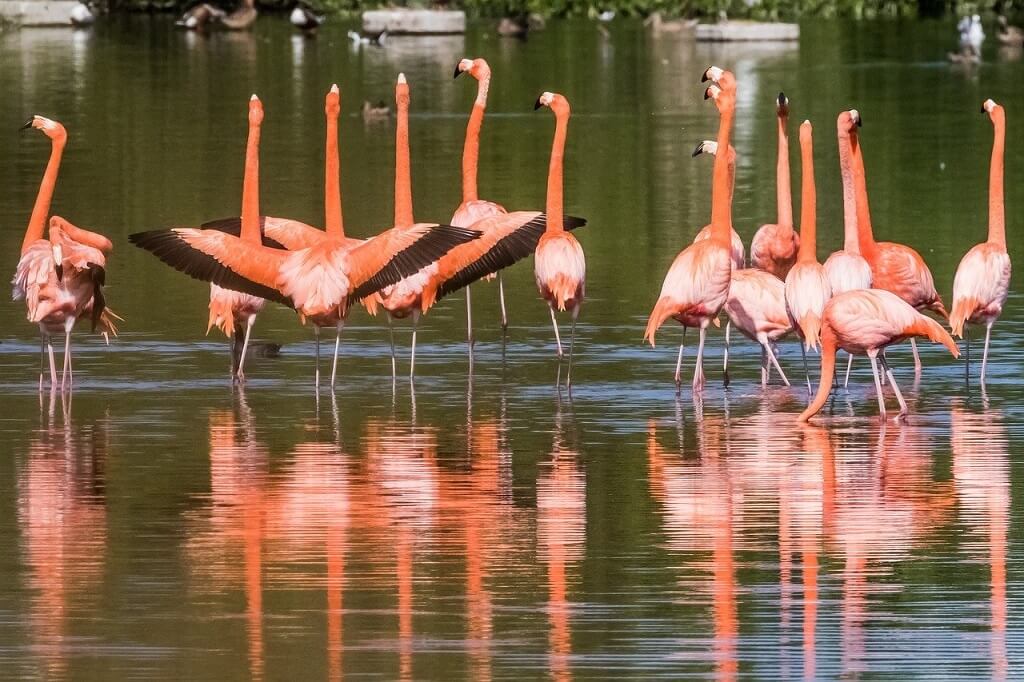
Reef System in the Cuban Caribbean – This expansive reef network is vital to preserving Cuba’s marine ecosystem, offering vibrant underwater life and pristine dive sites.
If you want to know more about Cuba, the Cuban UNESCO World Heritage sites and other cultural and natural features, refer to these guides.
What are your thoughts on the Cuban UNESCO World Heritage sites? Does this post inspire you to visit Cuba? Let us know in the comments.
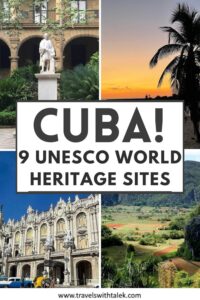

BTW, if you are getting ready for your trip, make sure to take advantage of these useful, money-saving links to book your trip:
- Research and book your flight with Skyscanner. I have found them to be the best because they list all airlines including the budget ones. You are always sure of having researched all options.
- For car rental around the world, Discover Cars has flexible pickup and drop-off options, I recommend Discover Cars.
- Book your accommodation with Booking.com. I find they have a wide selection and a nice, user-friendly, transparent website.
- Protect your trip and, more importantly, protect yourself with travel insurance. I use Travelinsurance.com and have been very happy with them.
- Looking for a small group tour to unforgettable destinations with top professionals? Intrepid Travel is your choice.
- For more general tours to any destination or attraction, book with Viator. Check them out.
- Need a visa? Get your visa for all countries with Passport Visa Express.
- Looking for a cool walking tour to explore a city? My favorite walking tours are offered by Take Walks.
- Food and drink tours are the best way to enjoy a city. And Devour Tours are my favorite.
- Looking for a good VPN to protect your security, privacy and freedom online while traveling? Nordvpn is your best option.
- The best and most economical way to stay connected while traveling is with an Airalo eSIM.
I personally use, and can recommend, all the companies listed here and elsewhere on my blog. By booking through these sites, the small commission we earn – at no cost to you – helps us maintain this site so we can continue to offer our readers valuable travel tips and advice.















